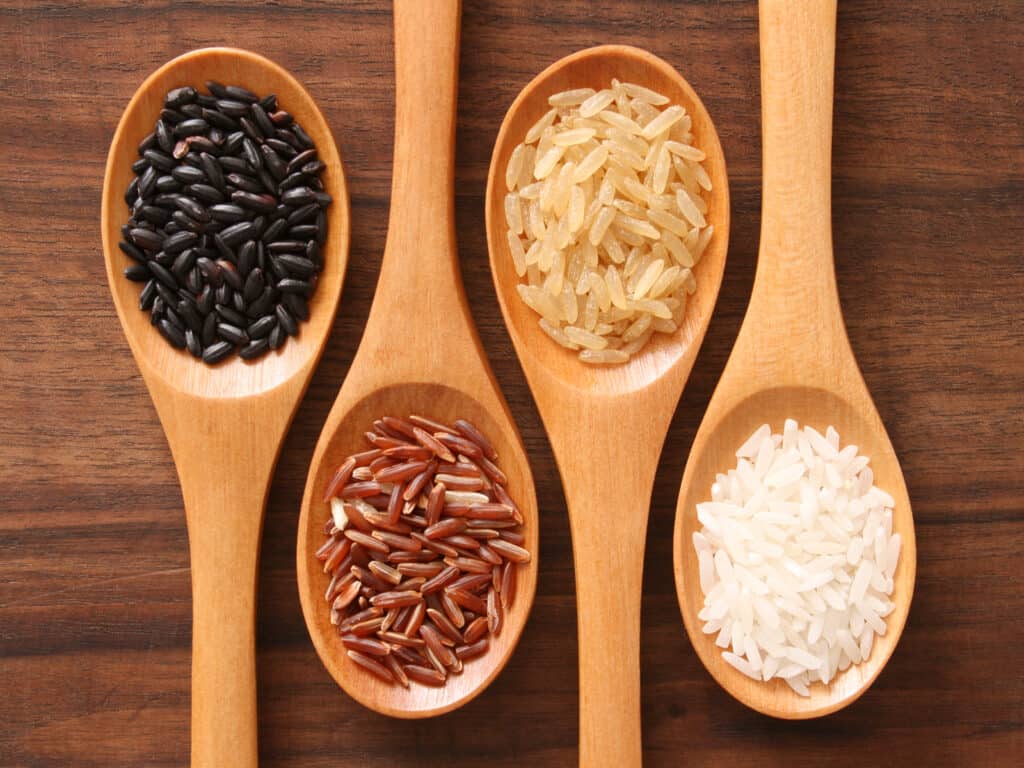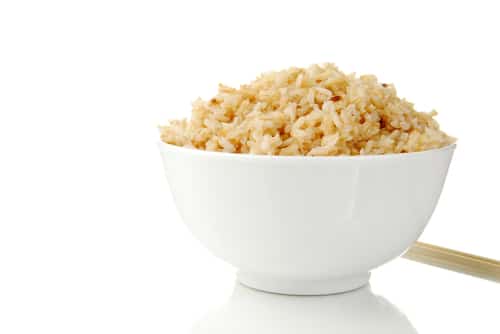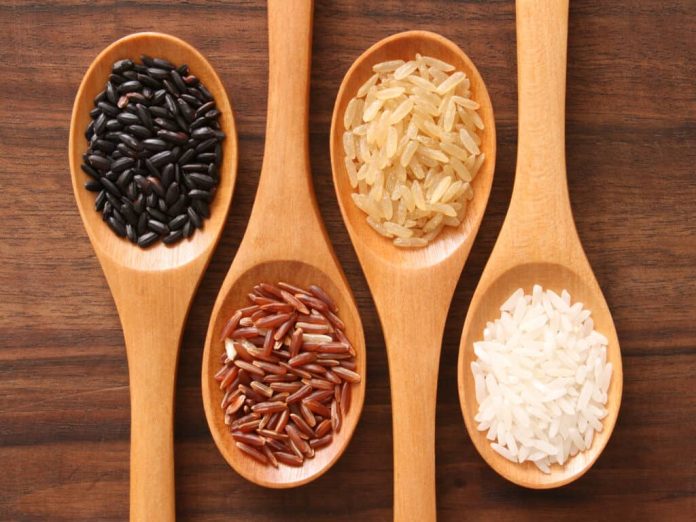Are you confused about which one to choose: red, black, brown, or white rice? Let us help you pick the healthiest option. Many of us avoid eating rice on a daily basis because of its association with weight gain. In India, the most commonly consumed variety of rice is polished white rice, which has a bright, white appearance due to the processing and polishing it undergoes. However, the healthiest types of rice available are red, black, and brown rice, which have higher levels of fibre, protein, antioxidants, vitamins, and minerals compared to white rice. The primary problem with white rice is that they are highly processed, which means they lack essential nutrients and do not keep you full for long. Therefore, choosing the right type of rice is crucial to maintain good health. Having said that, it’s essential to compare red vs black vs brown vs white rice to determine which one is the healthiest for your overall well-being.
White vs red vs brown vs black: Know the pros and cons?

Here are some of the pros and cons of black, white, red, and brown rice as explained by Nutritionist Deepti Khatuja.
Pros of white rice
- Provides energy: White rice is a simple carbohydrate, meaning your body can break it down more easily and absorb the nutrients and carbohydrates more quickly because it lacks the bran and germ, as well as the fibre and fat content that goes along with them.
- Easy to digest: Due to the removal of the bran and germ during processing, white rice is easier to digest compared to other varieties of rice.
- Versatile: White rice is a staple food in many cuisines and can be used in various dishes such as stir-fries, sushi, and risotto.
Cons of white rice
- Lacks nutrients: The processing of white rice removes essential nutrients such as fibre, vitamins, and minerals, making it a less nutritious option compared to other types of rice.
- High glycemic index: White rice has a high glycemic index, meaning it can cause a spike in blood sugar levels, leading to insulin resistance and an increased risk of type 2 diabetes.
- Not filling: Due to its lack of fibre and protein, white rice does not keep you full for long, leading to overeating and weight gain.
Pros of brown rice

- Rich in nutrients: Brown rice is a whole grain and contains the bran and germ, which are rich in fibre, vitamins, and minerals, making it a more nutritious option compared to white rice.
- Lowers cholesterol: The fibre in brown rice helps reduce cholesterol levels, promoting heart health.
- Keeps you full: The high fibre and protein content in brown rice make it a filling option, helping you stay satiated for longer periods.
Cons of brown rice
- Longer cooking time: Brown rice takes longer to cook compared to white rice, which may be inconvenient for some people.
- Stronger flavor: Brown rice has a nuttier and earthier taste compared to white rice, which may not be preferred by everyone.
- Higher calorie content: Due to its higher fibre and nutrient content, brown rice also has a higher calorie count compared to white rice.
Pros of red rice
- Antioxidant-rich: Red rice gets its color from anthocyanins, which are powerful antioxidants that help fight against free radicals and prevent cell damage.
- Good source of iron: Red rice is a good source of iron, which is essential for the production of red blood cells and maintaining energy levels.
- Lowers inflammation: The antioxidants in red rice have anti-inflammatory properties, making it beneficial for those with inflammatory conditions.
Cons of red rice
- Expensive: Red rice is relatively more expensive compared to other types of rice, making it less accessible for some people.
- Not widely available: Red rice may not be readily available in all supermarkets or grocery stores, making it difficult for some people to incorporate into their diets.
- Strong flavor: Like brown rice, red rice also has a stronger and nuttier flavor, which may not be preferred by everyone.
Pros of black rice
- High in antioxidants: Black rice contains high levels of anthocyanins, the same powerful antioxidants found in red rice, making it beneficial for fighting against free radicals and preventing cell damage.
- Good source of protein: Black rice is a good source of plant-based protein, making it an excellent option for vegetarians and vegans.
- Lowers cholesterol: The fibre in black rice helps lower cholesterol levels, promoting heart health.
Cons of black rice
- Expensive: Black rice is relatively more expensive compared to white rice, making it less accessible for some people.
- Longer cooking time: Black rice takes longer to cook compared to white rice, which may be inconvenient for some people.
- Strong flavor: Black rice has a nuttier and earthier taste compared to white rice, which may not be preferred by everyone.
Red vs black vs brown vs white rice: Which one is healthier?
After comparing the pros and cons of each type of rice, it is clear that red, black, and brown rice are healthier options compared to white rice. They contain higher levels of nutrients, antioxidants, and fibre, making them more beneficial for overall health. However, it is essential to note that all types of rice can be a part of a healthy diet when consumed in moderation. It ultimately comes down to personal preference and availability.
To further understand the nutritional differences between these types of rice, let’s take a look at the table below:
| Nutrient (per 100g) | White Rice | Brown Rice | Red Rice | Black Rice |
|---|---|---|---|---|
| Calories | 130 | 111 | 113 | 112 |
| Carbohydrates | 28.2g | 23.5g | 23.5g | 23.5g |
| Protein | 2.7g | 2.6g | 2.6g | 2.6g |
| Fat | 0.3g | 0.9g | 0.8g | 1.4g |
| Fibre | 0.4g | 1.8g | 1.8g | 2.7g |
| Vitamin B1 | 0.1mg | 0.1mg | 0.1mg | 0.1mg |
| Vitamin B3 | 1.6mg | 1.8mg | 1.8mg | 1.8mg |
| Iron | 0.4mg | 0.8mg | 0.8mg | 0.8mg |
| Zinc | 0.2mg | 1.1mg | 1.1mg | 1.1mg |
| Magnesium | 11mg | 43mg | 43mg | 43mg |
As seen in the table, brown, red, and black rice contain higher levels of fibre, protein, iron, zinc, and magnesium compared to white rice. They also have lower calorie and carbohydrate content, making them a better option for weight management. However, it is essential to note that the nutritional values may vary depending on the brand and type of rice.
In conclusion, when it comes to choosing between red vs black vs brown vs white rice, it is clear that the latter three are healthier options compared to white rice. They contain higher levels of nutrients, antioxidants, and fibre, making them more beneficial for overall health. However, it is essential to remember that all types of rice can be a part of a healthy diet when consumed in moderation. It ultimately comes down to personal preference and availability. So, next time you’re at the grocery store, consider adding some variety to your rice choices and opt for the healthier options of red, black, or brown rice. Your body will thank you for it.
